Just like fig treeThe almond is not specific to our area either. It is a fruit tree that needs a lot of warmth and light, and frost can cause problems. That is why the few specimens in the country could only be found in Banat, Dobrogea and the warm areas of Oltenia and Muntenia. Climatic changes, with higher average annual temperatures and less rainfall, have also made our country a good place for almonds. Farmers started growing almonds based on the ever-increasing demand for almonds worldwide. The exploitation period for almonds is 30-35 years on farms, after which they have to be replaced. Also, during harvesting, some of the branches have to be cut to stimulate flowering on the others. This produces a quantity of wood that can be a delight for enthusiasts thanks to its distinctive design and colors. Learn more about almond wood, the tree's characteristics and the difference between sweet and bitter almond below.
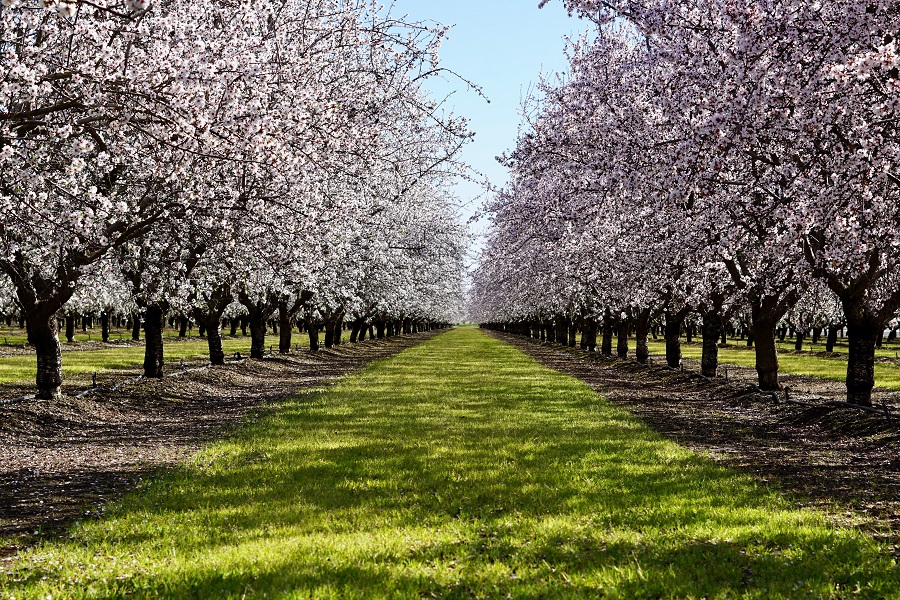
Almond, one of the oldest cultivated trees
Migdal (Prunus dulcis, Prunus amygdalus or Amygdalus communis) is a member of the Rosaceae family, like plum, its apricot cherry. If you want to search for information about him you can find him as almond tree (in English), almond (in Italian) or almond tree (French). It is highly prized for the seeds of its fruit - almonds - which are used as food or for extracting oils used in cosmetics, pharmaceuticals or for flavoring alcoholic drinks.
Native to central and southwest Asia and north Africa, it has been cultivated for more than 3000 years. Almonds have also been found in Tutankhamun's tomb. Since ancient times it has been brought to the Mediterranean and southern Europe, and in modern times it has reached from the USA to Australia. In the wild it now grows only in areas of western Asia Minor (Levant).
A harbinger of spring that must be kept frost-free
The almond is a small tree whose trunk, often twisted, reaches up to 6-10 m and 30-40 cm in diameter. It is not very demanding but thrives well in calcareous soils. Care must be taken that the water table is not too close because the roots can rot. The bark is grayish and can become scaly in older specimens. It is also the bark that distinguishes almonds from cherries and apricots, as the flowers are very similar. Small cracks, shiny areas or dark gray patches on the bark of almond trees, which are absent in other trees.
The leaves are green, glossy, hairless, narrow and oblong. Flowers appear on single branches or in clusters of 2 to 4 and are white or faint pink in the sweet and deep pink in the bitter. The fruits are dry, oval and have two shells, like the walnut. The outer shell is fleshy, covered with hairs and green in color, while the inner shell is woody with holes and bumps. Inside is the seed, which is edible and from which the oils are extracted.
The word almond comes from Hebrew and means "the one who wakes up". It refers to the fact that it is the first to flower, sometimes even before winter is over, so it is supposed to be the one that 'wakes up' spring. It thrives well in warmer areas with mild winters, where frost can't damage the delicate, very early flowers.
The best areas in our country for growing almond are those favorable to vines. In addition to the southern areas, where almond has been acclimatized for over 150 years, it can now also be grown in Prahova, Arad, Bihor and Sălaj.
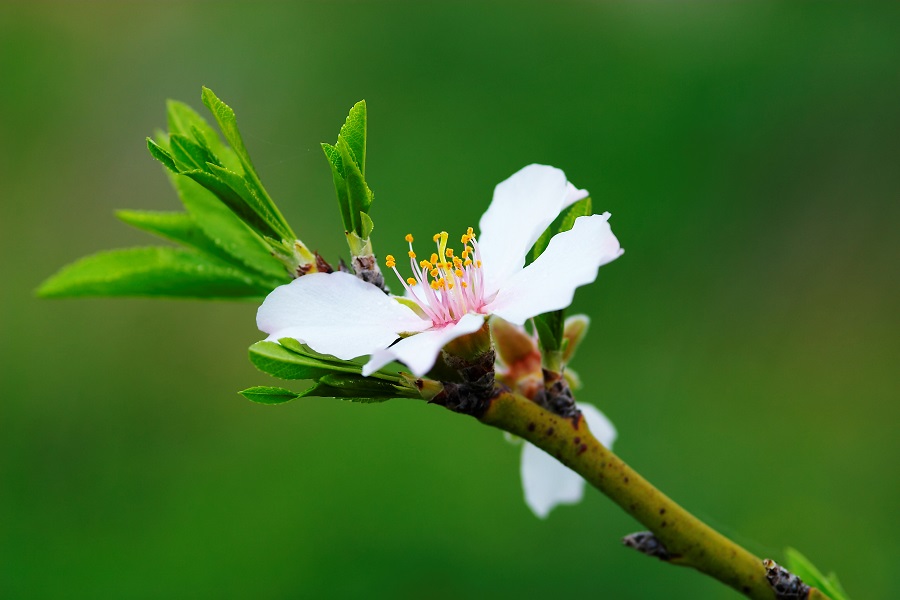
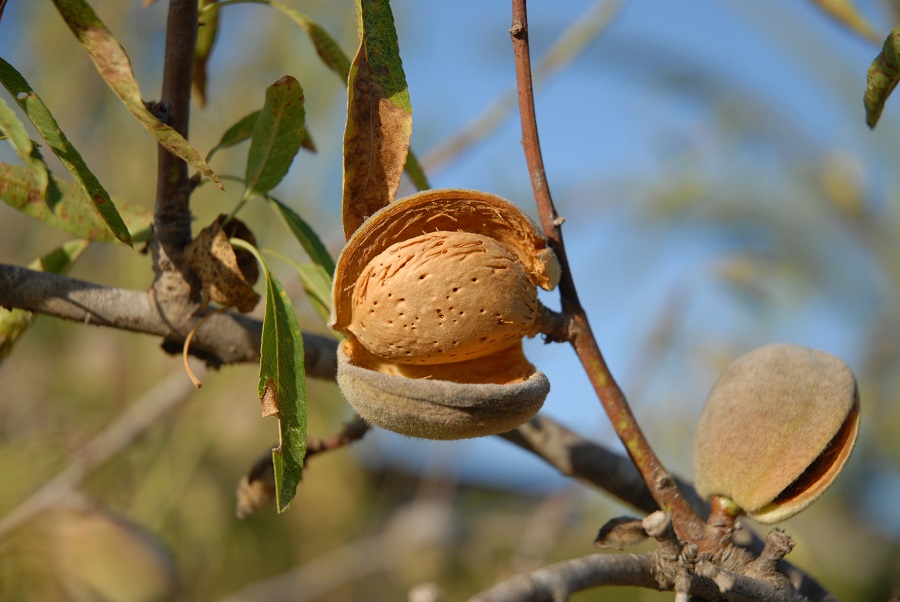
Sweet and bitter almond
As with the cherry, there are two varieties of almond: the sweet almond (Prunus dulcis, variety dulcis) and the bitter almond (Prunus dulcis, variety amara). In terms of the tree they are very similar, the difference being in the flowers, the sweet almond's flowers are white, the others bright pink.
Some are sweet and edible, while others are bitter and impossible to eat. In fact, the bitter ones should not even be eaten because they contain prussic acid, a dangerous cyanic compound. It is also present in minute quantities in sweet almonds, but the amount in bitter almonds is more than 40 times higher.
Sweet almonds can be eaten as they are, are used in various forms in food (flour, milk) and are processed to extract oil used in cosmetics and pharmaceuticals. Bitter almonds are used to extract essential (volatile) oils which contain mainly benzaldehyde, the substance responsible for the specific smell. It is used to flavor drinks (the famous Amaretto Disaronno), cakes and various products used in cosmetics. Before use, the extracted volatile oil is processed to remove the prussic acid, making it safe and without risk to health.
Almond wood - characteristics and properties
Almond wood is of little industrial interest and therefore little known. Its specific pattern and the colors it can develop inside make it highly prized by carpenters. In cross-section you can see the difference between sapwood and heartwood, the sapwood being lighter in color, slightly yellowish, and the heartwood reddish brown with pink, orange or purple colored streaks.
Fiber is fine, delicate, plum and cherry-like, often twisted or irregular. The annual rings are well demarcated, of varying thickness, and the pores are crowded in the early wood zone. The pores are small, fine, round, numerous and sometimes diagonally arranged.
Almond wood is very hard and dense, with a density between 700 and 800 kg/m³. It is very prone to cracking in the radial direction and great care must be taken when cutting. When the water content in the wood is high, cracking can make the wood unusable even for small jobs. Slow drying at low temperatures is recommended and the fiber ends should be protected with paraffin, aracite solution or diluted primer. It is glued and finished without problems.
It can be processed mechanically or by hand. During processing, the wood may give off a specific bitter almond odor.
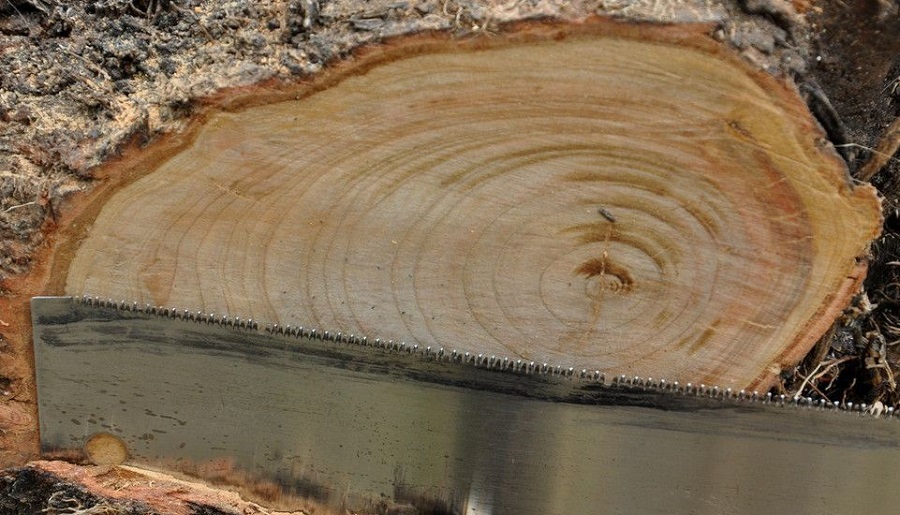
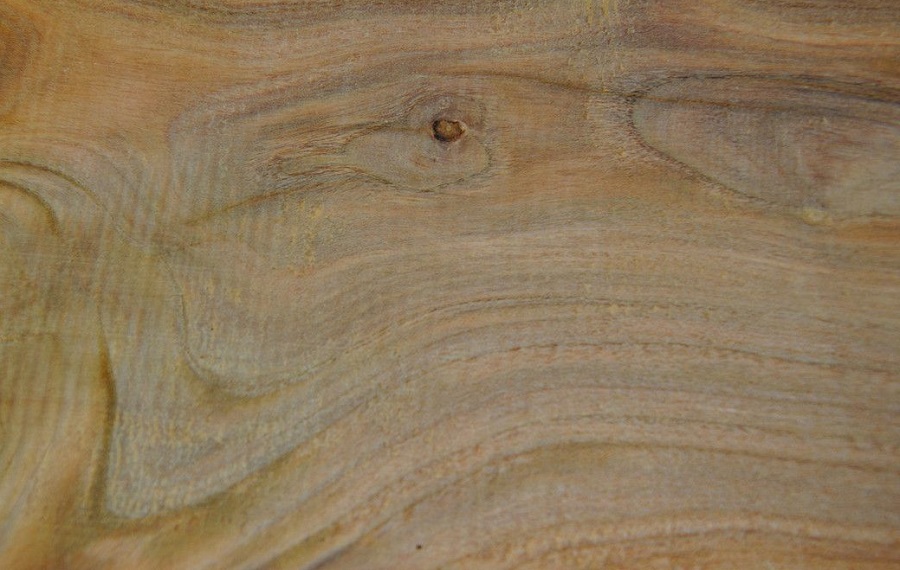
Uses of almond wood
Almond wood is rare in our country and is only used for unique, special works. In countries like France and Italy, where it is more readily available but not a common wood, it is used to make small pieces of furniture. Small pieces of wood can be turned or carved into pens, bowls or small decorative objects. Because of its special color, it is used in inlay.
It is a wood with a specific resonance and is sometimes chosen for making bagpipes. It's a very good firewood, being very similar to oak treefrom this point of view. It gives off a lot of heat, the charcoal lasts a long time and produces a small amount of ash. Although it is not as widely used as plum or cherry wood, it is also a popular wood for smoking meats which gives it a bittersweet, nutty flavor.

The real value of the almond is its fruit
Sweet almonds are widely used in confectionery for marzipan and various cakes. Al almond flour replaces wheat flour in gluten-free dishes, and almond milk is used by people with lactose intolerance. In Asian cuisine they are used in dishes containing chicken, fish, beef or vegetarian dishes. Almonds are high in protein and fat and provide small amounts of iron, calcium, phosphorus and vitamins A, B complex and E.
Sweet almond oil is mainly composed of olein and also contains linoleic acid and glucosides. High in protein, vitamins and minerals, it is nourishing and revitalizing and is used in skin and hair care creams. Volatile bitter almond oil is a widely used natural flavoring in both food and cosmetics. Both oils are used in the pharmaceutical industry.
I hope you find the information interesting. We always welcome additions. And if you have any questions or queries, please leave them below in the dedicated space. I'll be sure to reply.




































Add comment